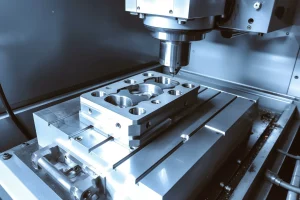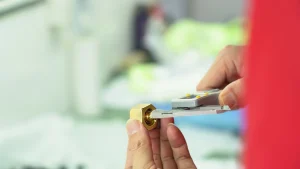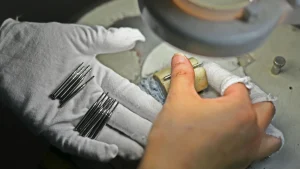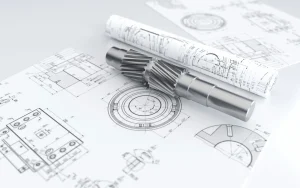At the magnificent moment when the rocket pierces the sky, behind the precise positioning of the satellite in silent space, there are countless metal parts with precision down to the micron level. These key parts of spacecraft “joints” and “blood vessels”, one of the cornerstones of their reliability is the precision weapon of modern manufacturing – CNC (Computer Numerical Control) machining technology. It is like the “invisible wings” of the aerospace industry, silently supporting the realization of every flying dream.
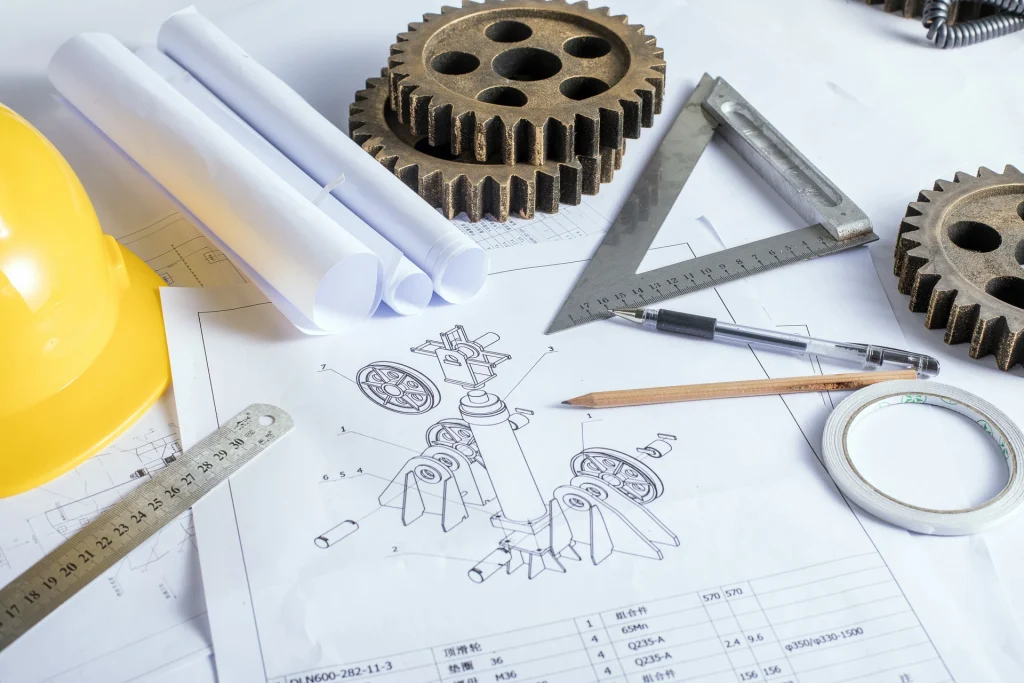
The Demands of Aerospace: The Extreme Challenges of Materials and Precision
The requirements for CNC machining in the aerospace field can be called the “Everest” of the manufacturing industry:
1. Material “hard bone”:Titanium alloy (Ti-6Al-4V), superalloys (such as Inconel 718), high-strength special steel, composite metal matrix, etc. are the first choice for aerospace structural parts and engine components. Their common characteristics are: extremely high strength, high hardness, poor thermal conductivity, and serious tendency to work hardening. This puts the tools to the test, the optimization of cutting parameters, and the control of thermal deformation.
2. Accuracy “zero tolerance” :Spacecraft often operate in extreme temperatures, violent vibrations, and ultra-high vacuum environments. A slight dimensional deviation or surface defect can lead to seal failure, mechanism jamming, or even catastrophic consequences. Many critical components require tolerances to be stable within ±0.005mm (5 microns), surface roughness Ra values below 0.4μm are the norm, and some optical or precision transmission components are even more demanding.
3. Complex geometry “show-off field”:From the complex and twisted turbine blades of rocket engines, the densely arranged microscopic holes on fuel injectors, to the lightweight and high-rigidity special-shaped curved structure of satellite supports, to various precision valve bodies and sensor housings of spacecraft, their geometry is far more complex than that of ordinary industrial parts. This requires CNC equipment to have strong multi-axis linkage (especially five-axis linkage) capabilities, high dynamic response performance, and advanced CAM programming strategies.
CNC Empowering Aerospace: The “Core Code” of Precision Manufacturing
In the face of these challenges, modern CNC machining technology offers key solutions:
1. High rigidity and high-precision machine tools are the foundation:Aerospace-grade CNC machine tools must have excellent mechanical stability, thermal stability (such as using linear motors, liquid-cooled lead screws, constant temperature environment), and nanoscale positioning accuracy and repeatable positioning accuracy. Precision spindles (often requiring highly rigid tool holder interfaces such as HSK and CAPTO) and high-speed feed systems are indispensable.
2. Multi-axis linkage technology unlocks complex structures:5-axis CNC machining centers are the “standard” for the manufacturing of complex parts in aerospace. It allows the tool to approach the workpiece from any angle, and can complete the machining of multiple surfaces with a single clamping, greatly reducing clamping errors and efficiently realizing precision machining of complex curved surfaces, deep cavities, and special-shaped features.
3. Smart’ Tools and Craftsmanship:For Difficult-to-Machine Materials:
Tool Selection:Ultra-fine grain carbide, coatings (such as diamond coating, TiAlN/AlCrN composite coating), ceramics, and even cubic boron nitride (CBN) and polycrystalline diamond (PCD) tools are widely used to meet the needs of high hardness and wear resistance.
Process Optimization:Apply high-speed cutting (HSC) and high-efficiency cutting (HPC) strategies, combined with micro-lubrication (MQL) or high-pressure cooling (HPC) techniques, to effectively reduce cutting heat, reduce deformation, and improve tool life and surface quality. For thin-walled parts, strategies such as layered cutting and symmetrical machining are used to control deformation.
4. Microporous processing “embroidery needle”:Microholes (diameter can be less than 0.1mm) on fuel injectors and cooling runners are difficult points. Precision CNC drilling, EDM or laser drilling technology work together with high-magnification in-line inspection to ensure that hole diameter, hole depth, position and surface quality are foolproof.
5. The iron law of quality traceability throughout the process:The core of aerospace CNC machining is process controland data traceability:
First Article Inspection (FAI)is extremely strict, usually requiring the use of ultra-high-precision coordinate measuring machines (CMMs), laser scanners, etc. for full-scale inspection.
Process Monitoring:Widely used in online measurement, tool breakage detection, and cutting force/vibration monitoring systems to provide real-time early warning of potential problems.
Full process traceability:The processing parameters, operators, inspection data, and material batch/tool information used in each process must be fully recorded and bound with a unique part identification (such as a QR code) to meet the requirements of aerospace quality management systems such as AS9100.
Industry pain points and synergy
Aerospace CNC machining service providers and OEMs face common challenges:
High cost pressure: Huge investment in equipment, tools, testing, certification, and personnel, and most of them are produced in small batches and multiple varieties, resulting in high cost per piece.
Long-cycle certification:New suppliers enter the supply chain through a lengthy process of qualification, process review, and first article approval (PPAP).
Technical confidentiality:It involves core design and process parameters, and has extremely high requirements for information security and intellectual property protection.
The key to successful collaboration lies in deep synergy:
Early Intervention (ESI):CNC service providers are involved in the design phase, providing manufacturability (DFM) recommendations, optimizing structural design to reduce machining difficulty and cost.
Process joint development:For specific difficult-to-machine materials or complex structures, both parties jointly research, test and cure the optimal process route.
Transparent and digital management:Use the MES system to share production progress and quality data, and establish a mutual trust communication mechanism.
Conclusion: The wings of precision, holding up the dream of flying
CNC machining in space equipment manufacturing is far from a simple “cutting metal”. It is a systematic engineering that combines cutting-edge equipment, exquisite craftsmanship, rigorous management, and deep industry knowledge. Every successful space launch embodies the wisdom and sweat of countless CNC engineers and operators next to machine tools. Choosing a CNC machining service partner that truly understands the language of aerospace, has deep technical accumulation, and has a perfect quality control system is the basic guarantee to ensure the reliability, safety and accuracy of the core components of the spacecraft. When the rocket roars into the air and the satellite travels around the world, the precise CNC components are the solid “invisible wings” that support the dream of mankind to explore the stars and the sea.

